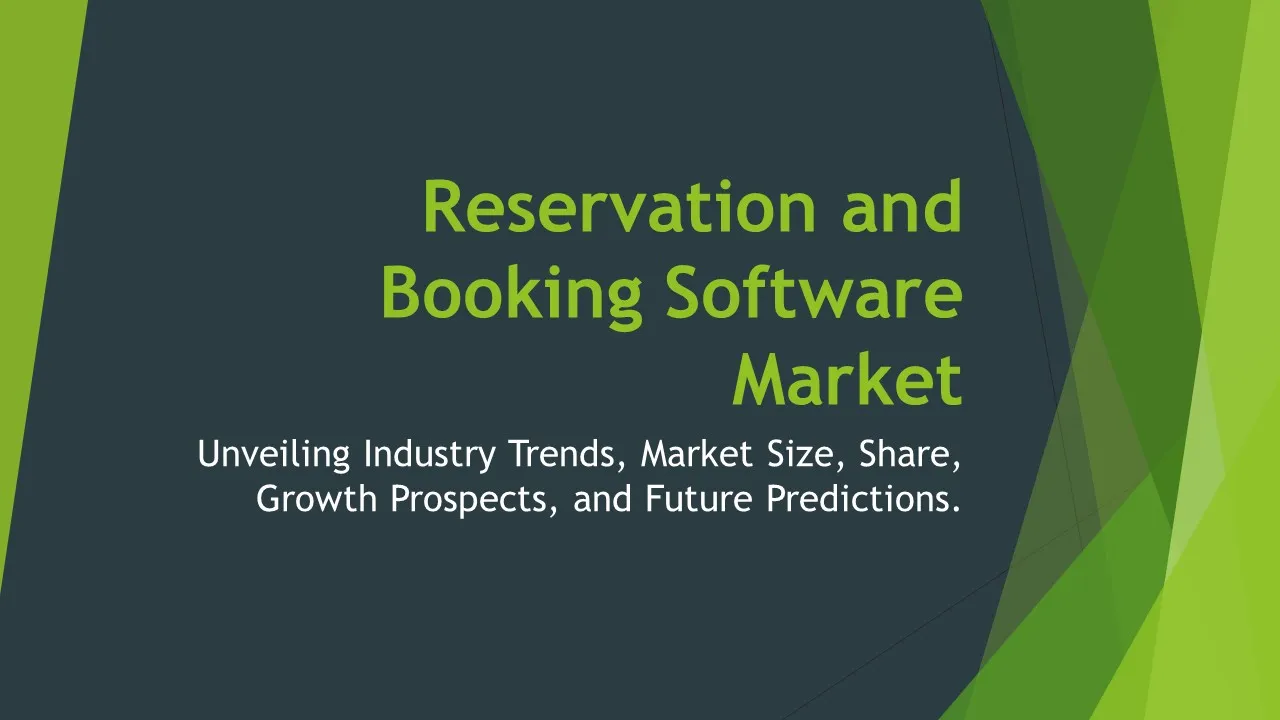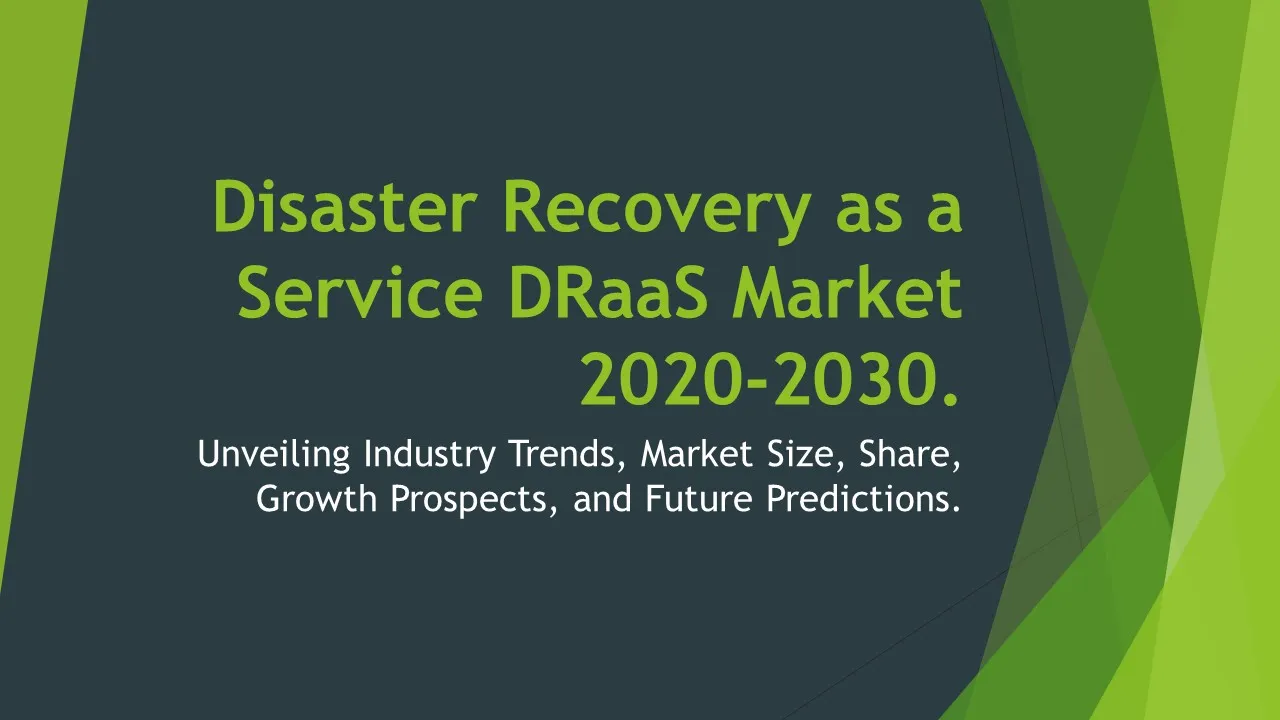401 k Software
401k Software Market Segments - by Deployment Type (Cloud-based, On-premises), Organization Size (Small and Medium Enterprises, Large Enterprises), End-User (Financial Institutions, Investment Firms, Employee Benefit Providers, Others), Pricing Model (Subscription-based, One-time License), and Region (North America, Europe, Asia Pacific, Latin America, Middle East & Africa) - Global Industry Analysis, Growth, Share, Size, Trends, and Forecast 2025-2035
- Report Preview
- Table Of Content
- Segments
- Methodology
401k Software Market Outlook
The global 401k software market is projected to reach approximately USD 4.2 billion by 2035, growing at a remarkable compound annual growth rate (CAGR) of around 10.5% from 2025 to 2035. This growth is primarily driven by the increasing adoption of digital solutions among organizations looking to streamline their retirement plan management, improve compliance with regulations, and enhance employee engagement in retirement savings. Additionally, the rising number of small and medium enterprises (SMEs) recognizing the importance of providing robust retirement benefits to attract and retain talent further fuels the demand for 401k software solutions. The shift towards cloud-based platforms, which offer flexibility and scalability, is also propelling market growth, making it easier for companies to implement and manage their retirement plans effectively. Furthermore, heightened awareness about the significance of retirement savings among employees has led to increased investments in software solutions that facilitate better management and transparency for both employers and employees.
Growth Factor of the Market
Several factors are contributing to the growth of the 401k software market, and one of the most significant is the rising demand for automation in retirement plan management. As businesses seek to reduce administrative burdens and minimize the risk of non-compliance with regulations, the adoption of software solutions that automate processes such as enrollment, contribution tracking, and reporting has become essential. Additionally, the growing trend of remote work has prompted a recalibration of employee benefits, leading companies to invest in digital solutions that facilitate easy access to retirement planning tools for their remote workforce. Moreover, the increasing complexity of retirement plans and the evolving regulatory landscape have created a need for advanced software that can adapt to changing requirements while providing comprehensive analytics and reporting capabilities. The COVID-19 pandemic has also highlighted the importance of financial wellness, pushing employers to prioritize retirement benefits, thus driving demand for 401k software. Finally, the emergence of fintech companies specializing in retirement solutions presents a competitive landscape that encourages innovation and better service offerings.
Key Highlights of the Market
- The global 401k software market is anticipated to grow at a CAGR of 10.5% from 2025 to 2035.
- Increased digital transformation in organizations is a primary driver for market growth.
- Cloud-based deployment models are gaining significant traction due to their scalability and flexibility.
- SMEs are increasingly adopting 401k software solutions to enhance employee benefits.
- Compliance with regulatory changes is a key factor driving investments in advanced software solutions.
By Deployment Type
Cloud-based:
The cloud-based deployment model is gaining considerable traction in the 401k software market, as it offers organizations enhanced flexibility and accessibility. Companies can access their software from anywhere, which is particularly beneficial in today's increasingly remote working environment. This model allows for automatic updates, ensuring that users always have the latest features and compliance capabilities without the need for manual installations. Moreover, the cloud-based solutions often come with a subscription pricing model, which can be more cost-effective for small and medium enterprises (SMEs) that may not have the resources to invest heavily in on-premises infrastructure. The ability to easily scale the solution according to the organization's needs and the secure data storage options provided by cloud service providers further enhance its appeal. Additionally, cloud-based software often facilitates better collaboration among stakeholders, allowing for real-time data sharing and improved decision-making processes.
On-premises:
On-premises deployment of 401k software remains a viable option for organizations that prioritize control and security over flexibility. For many large enterprises, particularly those in regulated industries such as financial services, maintaining data on-site can be crucial for compliance with stringent data protection regulations. On-premises solutions allow organizations to customize their software extensively, tailoring it to their specific operational needs and integrating it with other internal systems. However, this model often involves higher upfront costs and requires ongoing maintenance and IT support, which can be a significant burden for smaller organizations. The on-premises approach may also limit accessibility, as employees can only access the software from designated workstations. Despite these challenges, some businesses continue to prefer this deployment model due to the perceived benefits of enhanced security and complete control over their data.
By Organization Size
Small and Medium Enterprises:
Small and medium enterprises (SMEs) are increasingly recognizing the importance of offering 401k plans as a means to attract and retain talent. As a result, there is a growing demand for 401k software solutions that are tailored to the specific needs and budgets of these smaller organizations. Many SMEs are opting for cloud-based solutions that provide cost-effective, scalable features without the need for extensive IT resources. These solutions often include user-friendly interfaces that make it easier for employees to enroll in retirement plans and manage their investments. Moreover, SMEs are looking for software that can help them comply with regulatory requirements without the need for complex administrative processes. The focus on employee financial wellness is also prompting SMEs to invest in robust 401k software that can facilitate better communication and engagement around retirement planning, thus fostering a culture of financial responsibility.
Large Enterprises:
Large enterprises typically have more complex retirement plan needs, necessitating the use of advanced 401k software solutions that can handle a wide range of requirements. These organizations often manage multiple retirement plans and must navigate a complex regulatory landscape, making it essential to have software that provides comprehensive compliance and reporting tools. Large enterprises may opt for on-premises solutions to maintain greater control over their data and ensure that sensitive employee information is kept secure. In contrast, many are also adopting hybrid models that combine the benefits of both on-premises and cloud deployment. The demand for customization is particularly strong among large enterprises, as these organizations seek solutions that can be tailored to their unique corporate structures and benefits strategies. Additionally, as large employers face increasing pressure to enhance employee benefits packages, investing in sophisticated 401k software can provide a competitive advantage in attracting and retaining top talent.
By User
Financial Institutions:
Financial institutions are one of the primary users of 401k software, as they play a critical role in administering retirement plans for both individual clients and companies. These institutions require software solutions that provide robust reporting and compliance features, enabling them to meet regulatory requirements effectively. Moreover, the ability to integrate with various investment platforms and provide detailed analytics is essential for financial institutions to manage their clients’ retirement assets successfully. As the competition among financial service providers intensifies, having advanced 401k software can enhance their value proposition, allowing them to offer better services and insights to their clients. Furthermore, the growing trend towards personal finance management has prompted financial institutions to seek software that can help educate and engage clients on their retirement options, thereby facilitating better investment decisions.
Investment Firms:
Investment firms also represent a significant user segment in the 401k software market. These firms require specialized software that can manage retirement plan investments, track performance, and provide comprehensive reporting to plan sponsors. The ability to analyze investment options and make recommendations based on current market conditions is crucial for investment firms, as they seek to optimize the retirement assets under their management. Additionally, investment firms benefit from software solutions that facilitate communication with plan participants, helping them understand their investment choices and retirement planning strategies. As these firms increasingly focus on digital transformation, the demand for sophisticated 401k software that integrates advanced analytics and investment tracking capabilities is expected to grow significantly.
Employee Benefit Providers:
Employee benefit providers are another key user group for 401k software solutions. These organizations are tasked with designing and managing employee benefit programs, including retirement plans, and therefore require software that simplifies administration and enhances employee engagement. They often seek out solutions that can automate processes such as enrollment, contributions, and compliance reporting, thereby reducing the administrative burden on their teams. Additionally, employee benefit providers are focusing on delivering superior client experiences, and having advanced 401k software is essential to achieving this goal. With the increasing emphasis on employee financial wellness, these providers are also looking for software that can offer educational resources and tools to help employees make informed decisions about their retirement savings, leading to enhanced satisfaction and retention rates among clients.
By Pricing Model
Subscription-based:
Subscription-based pricing models are becoming increasingly popular in the 401k software market, particularly among small and medium enterprises (SMEs) looking to manage costs effectively. This model allows organizations to pay a recurring fee for access to software services, which can be more manageable than making a one-time investment in on-premises solutions. Subscription-based models often come with regular updates and customer support, ensuring that organizations always have access to the latest features and compliance tools. Furthermore, this pricing structure allows companies to scale their software usage based on their needs, accommodating growth without significant upfront costs. As SMEs look to enhance their employee benefit offerings, the subscription model provides a flexible solution that aligns with their financial planning and operational needs.
One-time License:
The one-time license pricing model is still a viable option for larger enterprises that prefer the control and customization that comes with on-premises solutions. By paying a single fee, organizations can obtain a perpetual license for the software, which can then be customized to meet their specific requirements. This model is often accompanied by additional fees for maintenance, updates, and support, which can add to the overall cost over time. However, for organizations with the necessary IT infrastructure and resources, a one-time license can be more cost-effective in the long run, especially if they anticipate using the software for an extended period. This pricing model is particularly appealing for large enterprises that require robust security measures and have the capacity to manage their software environment internally. As companies continue to weigh their options, the choice between subscription-based and one-time licensing will largely depend on their budget, scalability needs, and preference for control over their software solutions.
By Region
The 401k software market is witnessing significant growth across various regions, with North America being the leading market due to the region's well-established retirement savings culture and a high penetration rate of 401k plans among employers. The North American market is anticipated to grow at a CAGR of around 10.8% from 2025 to 2035, driven by increasing adoption of advanced software solutions among financial institutions and employers seeking to enhance their retirement offerings. Moreover, the presence of key market players in the region, along with ongoing regulatory changes that require businesses to invest in compliant solutions, is further propelling market growth. As companies strive to improve employee engagement in retirement savings, the demand for innovative 401k software that simplifies plan management and enhances user experience is expected to rise significantly.
Europe is also emerging as a significant region in the 401k software market, with increasing awareness regarding employee benefits and retirement planning. The European market is projected to experience steady growth, driven by organizations' focus on offering comprehensive retirement solutions to attract talent and comply with regulatory standards. Countries such as the United Kingdom, Germany, and France are leading the charge as they embrace digital transformation in their employee benefits systems. However, the market is still in the early stages of embracing advanced software solutions, which presents opportunities for vendors to introduce cutting-edge technologies and capture market share. The Asia Pacific region is expected to follow closely, witnessing substantial growth as more businesses recognize the importance of providing retirement benefits in an increasingly competitive job market.
Opportunities
As the 401k software market continues to evolve, there are numerous opportunities available for growth and innovation. One of the most promising areas is the increasing integration of artificial intelligence (AI) and machine learning (ML) into 401k software solutions. These technologies can enhance the user experience by providing personalized investment recommendations, predictive analytics for retirement planning, and automated compliance checks. Organizations that leverage AI and ML can offer sophisticated tools that empower employees to make informed decisions about their retirement savings, thereby increasing engagement and satisfaction. Additionally, the rise of fintech companies specializing in employee benefits is driving competition and innovation, creating a dynamic environment where established players must adapt and evolve to meet changing customer needs. This presents an opportunity for software developers to collaborate with fintech firms to enhance their offerings and provide more comprehensive solutions to clients.
Another opportunity lies in the growing emphasis on employee financial wellness programs. Organizations are increasingly recognizing the importance of promoting financial literacy and wellness among their employees as part of their overall benefits strategy. This trend is creating a demand for 401k software that incorporates educational resources, tools, and features designed to help employees understand their retirement options and make informed investment decisions. Companies that invest in developing user-friendly software solutions that prioritize financial wellness can tap into a growing market segment and differentiate themselves from competitors. Furthermore, as regulations surrounding retirement plans continue to evolve, there is an opportunity for software providers to develop solutions that ensure compliance with changing laws and requirements, helping employers navigate the complexities of retirement planning with confidence.
Threats
Despite the promising growth of the 401k software market, there are several threats that industry players must navigate. One of the most pressing threats is the increasing competition from emerging fintech companies that offer innovative retirement planning solutions. These startups often leverage the latest technologies to provide user-friendly interfaces and unique features that appeal to younger employees. As these companies continue to disrupt the traditional retirement planning landscape, established software providers may find it challenging to maintain their market share unless they adapt to changing consumer preferences and invest in enhancing their software solutions. Additionally, the rapid pace of technological advancements can pose a threat, as companies must continually innovate to stay relevant in a crowded market. Failing to keep up with emerging trends and technologies may result in a loss of customers and diminished market presence.
Another significant challenge facing the 401k software market is the complex regulatory environment surrounding retirement plans. Compliance with federal and state regulations is crucial for software developers and providers, as failure to adhere to these requirements can result in substantial fines and legal repercussions for their clients. As regulations continue to evolve, software companies must remain vigilant and responsive to changes, ensuring that their solutions are equipped to meet compliance standards. This may require ongoing investments in software development and updates, which can strain resources. In addition, economic downturns and fluctuations in the financial markets can impact employer contributions to retirement plans, leading to decreased demand for 401k software solutions. Organizations may delay investments in software as they focus on cost-cutting measures, making it vital for software providers to demonstrate the value of their solutions in times of economic uncertainty.
Competitor Outlook
- ADP, LLC
- Paychex, Inc.
- WageWorks, Inc.
- Ascensus, LLC
- Charles Schwab Corporation
- Fidelity Investments
- Empower Retirement
- Vanguard Group, Inc.
- Principal Financial Group
- MassMutual Financial Group
- T. Rowe Price Group, Inc.
- Lincoln Financial Group
- John Hancock Financial Services
- BlackRock, Inc.
- American Funds
The competitive landscape of the 401k software market is characterized by a mix of established financial service providers and innovative fintech companies. Major players such as Fidelity Investments, Charles Schwab, and ADP are leveraging their extensive experience and resources to offer comprehensive retirement plan management solutions. These companies often provide integrated platforms that combine 401k administration with investment management, compliance reporting, and employee engagement tools, catering to a broad spectrum of organizational needs. As the demand for user-friendly and efficient software grows, these established firms are investing in technology upgrades and customer service enhancements to maintain their market leadership.
On the other hand, fintech companies are shaking up the landscape by offering agile, technology-driven solutions that focus on enhancing the user experience. Startups such as Betterment and Wealthfront are gaining traction by providing intuitive platforms that empower employees to manage their 401k accounts easily. These companies are often characterized by their ability to adapt quickly to changing market dynamics and customer preferences, posing a significant challenge to traditional players who may struggle with legacy systems. The competition between established firms and emerging startups is driving rapid innovation in the sector, leading to a proliferation of new features and functionalities in 401k software solutions.
Key players in the market are also focusing on strategic partnerships and acquisitions to expand their service offerings and enhance their competitive position. For instance, companies like Empower Retirement and Ascensus have made strategic acquisitions to bolster their capabilities in administering retirement plans. Furthermore, collaboration between software providers and financial institutions is becoming increasingly common, as both parties seek to offer integrated solutions that meet the evolving needs of employers and employees alike. As the market continues to grow and evolve, maintaining a strong competitive edge will depend on the ability to innovate, adapt, and provide unparalleled value to clients.
1 Appendix
- 1.1 List of Tables
- 1.2 List of Figures
2 Introduction
- 2.1 Market Definition
- 2.2 Scope of the Report
- 2.3 Study Assumptions
- 2.4 Base Currency & Forecast Periods
3 Market Dynamics
- 3.1 Market Growth Factors
- 3.2 Economic & Global Events
- 3.3 Innovation Trends
- 3.4 Supply Chain Analysis
4 Consumer Behavior
- 4.1 Market Trends
- 4.2 Pricing Analysis
- 4.3 Buyer Insights
5 Key Player Profiles
- 5.1 ADP, LLC
- 5.1.1 Business Overview
- 5.1.2 Products & Services
- 5.1.3 Financials
- 5.1.4 Recent Developments
- 5.1.5 SWOT Analysis
- 5.2 Ascensus, LLC
- 5.2.1 Business Overview
- 5.2.2 Products & Services
- 5.2.3 Financials
- 5.2.4 Recent Developments
- 5.2.5 SWOT Analysis
- 5.3 Paychex, Inc.
- 5.3.1 Business Overview
- 5.3.2 Products & Services
- 5.3.3 Financials
- 5.3.4 Recent Developments
- 5.3.5 SWOT Analysis
- 5.4 American Funds
- 5.4.1 Business Overview
- 5.4.2 Products & Services
- 5.4.3 Financials
- 5.4.4 Recent Developments
- 5.4.5 SWOT Analysis
- 5.5 BlackRock, Inc.
- 5.5.1 Business Overview
- 5.5.2 Products & Services
- 5.5.3 Financials
- 5.5.4 Recent Developments
- 5.5.5 SWOT Analysis
- 5.6 WageWorks, Inc.
- 5.6.1 Business Overview
- 5.6.2 Products & Services
- 5.6.3 Financials
- 5.6.4 Recent Developments
- 5.6.5 SWOT Analysis
- 5.7 Empower Retirement
- 5.7.1 Business Overview
- 5.7.2 Products & Services
- 5.7.3 Financials
- 5.7.4 Recent Developments
- 5.7.5 SWOT Analysis
- 5.8 Fidelity Investments
- 5.8.1 Business Overview
- 5.8.2 Products & Services
- 5.8.3 Financials
- 5.8.4 Recent Developments
- 5.8.5 SWOT Analysis
- 5.9 Vanguard Group, Inc.
- 5.9.1 Business Overview
- 5.9.2 Products & Services
- 5.9.3 Financials
- 5.9.4 Recent Developments
- 5.9.5 SWOT Analysis
- 5.10 Lincoln Financial Group
- 5.10.1 Business Overview
- 5.10.2 Products & Services
- 5.10.3 Financials
- 5.10.4 Recent Developments
- 5.10.5 SWOT Analysis
- 5.11 Principal Financial Group
- 5.11.1 Business Overview
- 5.11.2 Products & Services
- 5.11.3 Financials
- 5.11.4 Recent Developments
- 5.11.5 SWOT Analysis
- 5.12 T. Rowe Price Group, Inc.
- 5.12.1 Business Overview
- 5.12.2 Products & Services
- 5.12.3 Financials
- 5.12.4 Recent Developments
- 5.12.5 SWOT Analysis
- 5.13 Charles Schwab Corporation
- 5.13.1 Business Overview
- 5.13.2 Products & Services
- 5.13.3 Financials
- 5.13.4 Recent Developments
- 5.13.5 SWOT Analysis
- 5.14 MassMutual Financial Group
- 5.14.1 Business Overview
- 5.14.2 Products & Services
- 5.14.3 Financials
- 5.14.4 Recent Developments
- 5.14.5 SWOT Analysis
- 5.15 John Hancock Financial Services
- 5.15.1 Business Overview
- 5.15.2 Products & Services
- 5.15.3 Financials
- 5.15.4 Recent Developments
- 5.15.5 SWOT Analysis
- 5.1 ADP, LLC
6 Market Segmentation
- 6.1 401 k Software Market, By User
- 6.1.1 Financial Institutions
- 6.1.2 Investment Firms
- 6.1.3 Employee Benefit Providers
- 6.1.4 Others
- 6.2 401 k Software Market, By Pricing Model
- 6.2.1 Subscription-based
- 6.2.2 One-time License
- 6.3 401 k Software Market, By Deployment Type
- 6.3.1 Cloud-based
- 6.3.2 On-premises
- 6.4 401 k Software Market, By Organization Size
- 6.4.1 Small and Medium Enterprises
- 6.4.2 Large Enterprises
- 6.1 401 k Software Market, By User
7 Competitive Analysis
- 7.1 Key Player Comparison
- 7.2 Market Share Analysis
- 7.3 Investment Trends
- 7.4 SWOT Analysis
8 Research Methodology
- 8.1 Analysis Design
- 8.2 Research Phases
- 8.3 Study Timeline
9 Future Market Outlook
- 9.1 Growth Forecast
- 9.2 Market Evolution
10 Geographical Overview
- 10.1 Europe - Market Analysis
- 10.1.1 By Country
- 10.1.1.1 UK
- 10.1.1.2 France
- 10.1.1.3 Germany
- 10.1.1.4 Spain
- 10.1.1.5 Italy
- 10.1.1 By Country
- 10.2 Asia Pacific - Market Analysis
- 10.2.1 By Country
- 10.2.1.1 India
- 10.2.1.2 China
- 10.2.1.3 Japan
- 10.2.1.4 South Korea
- 10.2.1 By Country
- 10.3 401 k Software Market by Region
- 10.4 Latin America - Market Analysis
- 10.4.1 By Country
- 10.4.1.1 Brazil
- 10.4.1.2 Argentina
- 10.4.1.3 Mexico
- 10.4.1 By Country
- 10.5 North America - Market Analysis
- 10.5.1 By Country
- 10.5.1.1 USA
- 10.5.1.2 Canada
- 10.5.1 By Country
- 10.6 Middle East & Africa - Market Analysis
- 10.6.1 By Country
- 10.6.1.1 Middle East
- 10.6.1.2 Africa
- 10.6.1 By Country
- 10.1 Europe - Market Analysis
11 Global Economic Factors
- 11.1 Inflation Impact
- 11.2 Trade Policies
12 Technology & Innovation
- 12.1 Emerging Technologies
- 12.2 AI & Digital Trends
- 12.3 Patent Research
13 Investment & Market Growth
- 13.1 Funding Trends
- 13.2 Future Market Projections
14 Market Overview & Key Insights
- 14.1 Executive Summary
- 14.2 Key Trends
- 14.3 Market Challenges
- 14.4 Regulatory Landscape
Segments Analyzed in the Report
The global 401 k Software market is categorized based on
By Deployment Type
- Cloud-based
- On-premises
By Organization Size
- Small and Medium Enterprises
- Large Enterprises
By User
- Financial Institutions
- Investment Firms
- Employee Benefit Providers
- Others
By Pricing Model
- Subscription-based
- One-time License
By Region
- North America
- Europe
- Asia Pacific
- Latin America
- Middle East & Africa
Key Players
- ADP, LLC
- Paychex, Inc.
- WageWorks, Inc.
- Ascensus, LLC
- Charles Schwab Corporation
- Fidelity Investments
- Empower Retirement
- Vanguard Group, Inc.
- Principal Financial Group
- MassMutual Financial Group
- T. Rowe Price Group, Inc.
- Lincoln Financial Group
- John Hancock Financial Services
- BlackRock, Inc.
- American Funds
- Publish Date : Jan 21 ,2025
- Report ID : IT-68841
- No. Of Pages : 100
- Format : |
- Ratings : 4.5 (110 Reviews)
Related reports









